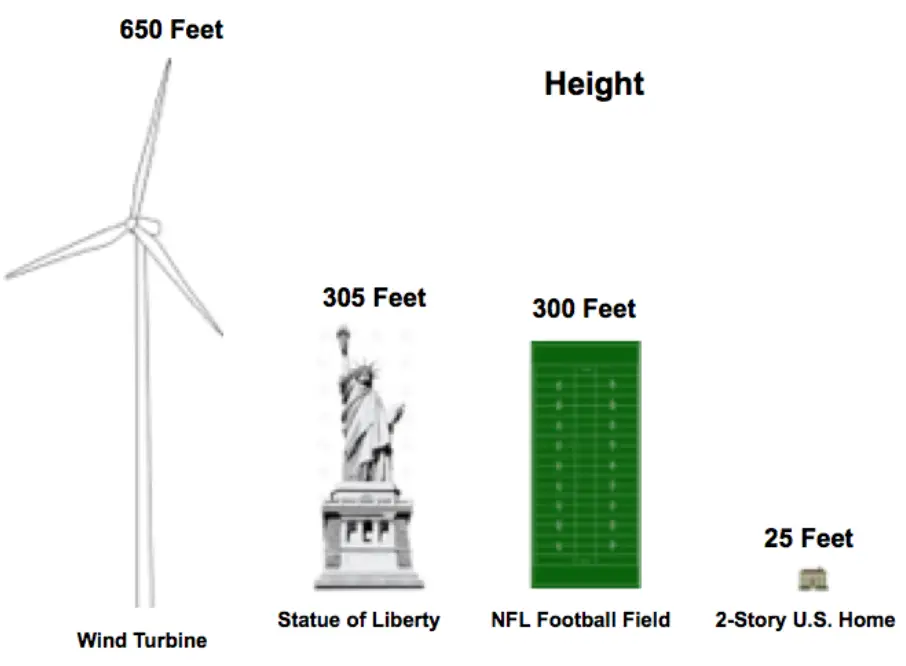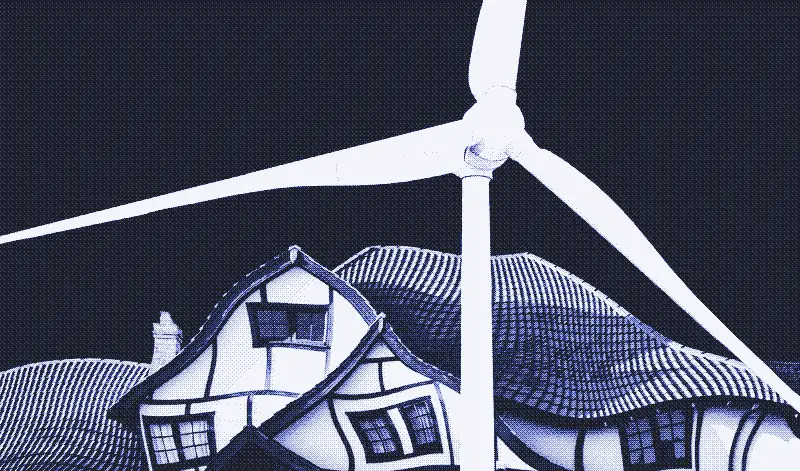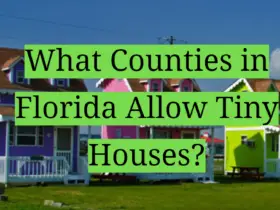Wind turbines are quickly becoming an attractive, cost-effective source of renewable energy for households and businesses across the globe. But just how much power can one turbine generate? The extent of power produced from a turbine varies depending on several elements, including its size and placement as well as the environment surrounding it. In this article, we will explore the factors that determine how many homes a wind turbine can supply and provide you with real-life examples to improve your comprehension of its efficacy. So if you’re interested in learning more about the potential of wind power read on!
Factors That Affect Wind Energy

The amount of energy produced by a wind turbine is based on several factors, including the size and type of turbine, its location, and local weather conditions.
Location
The location of a wind turbine is one of the most significant factors in determining its capacity to generate electricity. Wind speeds vary greatly between different regions and even within the same region, making it important to select an ideal spot for your turbine. Generally, a turbine in an area with fast-moving wind will generate significantly more energy than one situated in a location where the breeze is calmer.
Height
Elevation plays a significant role in the power capacity of wind turbines since much of the energy from gusts can only be harvested higher up in our atmosphere. The ideal size for a wind turbine, large enough to make it economically feasible, is generally between 80 and 140 meters tall. These turbines can produce enough electricity to provide energy for between 25 and 100 households.
Depending on area wind speed and the scale of turbine blades, a single setup can light up homes in unceasing streams.
Air Density
The strength of electricity generated by a wind turbine is dependent on both the air density and velocity of wind. The higher the air density, the greater the force of wind on a given area. A typical residential-size wind turbine can generate between 5 kilowatts and 15 kilowatts of electricity in an average air density of at least 825 grams per cubic meter. As air density diminishes, the energy generated by a wind turbine declines; when air density is greater, however, its power output increases.
Wind Speed
The amount of houses a wind turbine can power is primarily determined by the wind speed at the site. Generally, turbines require an average annual minimum wind speed of 5 meters per second (m/s) in order to be economically viable. If winds are too low, even the most efficient and powerful turbine won’t generate enough energy to be cost-effective. The amount of power generated by a wind turbine also increases with increasing wind speed up to a certain point. This is known as the turbine’s “rated capacity,” and it is determined by the specific design of the turbine. For example, some turbines may have a rated capacity of 2 MW at 10 m/s, while other turbines may have a rated capacity of 4 MW at 14 m/s.
Betz Limit
Wind turbines harvest the kinetic force of wind, converting it into current by spinning a rotor and activating an electric generator. The potential power output of a turbine is limited by a phenomenon known as the Betz limit, which states that no more than 59.3% of the energy in the wind can be extracted and converted into mechanical power. This means that a 10 kW rated wind turbine can generate an average of 5.93 kW, depending on the local wind resource. [1]
Can One Wind Turbine Power a House?
Absolutely! One wind turbine has the capacity to power a single house. However, the amount of electricity your home requires will depend on a few factors including where you live, how much energy your household uses, and the size and type of wind turbine you install.

In areas that experience steady wind speeds, a contemporary and well-designed turbine is all you need to power your entire household. Just one single device can generate enough electricity for the whole residence. The key is to ensure that the system is sized correctly for the electrical load of your house.
The average U.S. household uses about 900 kWh per month in electricity, but this amount can vary depending on how energy efficient your home is. To power one house, you will need a wind turbine system with an output of at least 1,500 watts.
How Much Does a Wind Turbine Cost for a Home?
The cost of a single wind turbine for a home varies greatly depending on the size and type of turbine. The price can range from a few thousand dollars to tens of thousands. The cost of installation will differ depending on the complexity, project requirements, and applicable local laws. A full wind energy system which includes a tower, generator and controller with battery storage will cost more than just a turbine.
Overall, the costs of wind energy for homes can range from $8,000 to $50,000 or more depending on the size and location. Of course, the amount of energy produced needs to be taken into account when making an investment in this technology. When deciding to install a wind turbine, it’s paramount to ascertain how much electricity you require and the frequency of use. Note that a wind turbine will only create power when there is sufficient breeze.
Homeowners are in luck because the government has introduced subsidized incentives for those investing in renewable energy systems. These incentives may include tax credits or other forms of assistance that can help offset some of the cost of a wind turbine.
Additionally, many utilities offer net metering programs which will pay homeowners for the excess energy produced by their turbines. [2]
Can I Put a Wind Turbine on my Property?
Yes, it is possible to put a wind turbine on your property. The specifics regarding the installation process will depend upon the local zoning laws and regulations in your area. Some areas may require additional permits or other forms of approval before you can proceed with the installation. Once you have obtained any necessary permits, you can begin installing the wind turbine on your property.
To install a wind turbine on your property, you will need to have sufficient space for the turbine and its infrastructure.
Additionally, it is important to place the turbine in an area that has enough wind flow to power your home or other buildings. It is also important to make sure that the installation does not obstruct any public rights of way.
Capacity Factor
Wind turbines require a certain capacity factor to be able to produce enough electricity to power an average home. Capacity factor is the proportion of energy a wind turbine generates compared to its maximum possible production over any given period. Generally, this number ranges between 20-50%. For instance, a wind turbine with a capacity factor of 25% would generate 25% of its maximum possible output throughout an entire year.
The higher the capacity factor of a wind turbine, the more electricity it can generate and homes it can supply with power. Generally speaking, a single industrial-sized wind turbine with a high capacity factor (30-50%) will be able to power between 300 and 900 homes. However, this number can vary greatly depending on the size of the turbine, its location and the quality of wind available. [3]
How Many Houses Can One Wind Turbine Realistically Power?
A variety of components contribute to the response for this inquiry, including the scale of your wind turbine and surrounding air flows. On average, a single large-scale wind turbine is capable of furnishing power to as many as 500 residences. Nevertheless, in regions with weaker wind speeds or small turbines, a solitary turbine may only be capable of powering several households.

There are also other considerations to take into account, such as the type of turbine used and its efficiency rating. Wind turbines come in various shapes and sizes and have different power ratings, so it’s important to choose a turbine that is suitable for your particular location and needs.
The amount of Energy Does One Home Use?
To comprehend just how many houses a single wind turbine can power, it is vital to grasp the amount of energy required for a single residence. On average, households in the United States consume approximately 10,800 kilowatt-hours (kWh) annually. This equates to 900 kWh per month.
However, energy consumption can vary greatly depending on a variety of factors, such as home size, number of inhabitants and location. For example, homes located in colder climates will likely consume more energy than homes located in warmer climates due to the need for heating and cooling.
Other Factors Include
- The size of the wind turbine: Bigger wind turbines can generate more power, as they have a larger surface area to capture wind.
- Altitude: Turbines located at higher altitudes tend to generate more electricity due to the increased density of the air, which allows for greater efficiency.
- Accessibility: The cost of constructing a turbine and connecting it to the grid can be expensive, so if the turbine is in an area that isn’t easily accessible, this can also affect its output.
Ultimately, numerous elements impact how many homes a wind turbine can power. [4]

FAQ
How big of a wind turbine do you need to power a house?
In determining the correct size of wind turbine to generate electricity for your home, you must consider multiple elements including: the amount of power needed, local average wind speed and which type of turbine you select. Generally speaking, it takes a turbine with a capacity of at least 5 kilowatts (kW) to produce enough electricity to power a typical household. A 5kW turbine can produce around 15,000 kWh of electricity annually – enough to power a household of three to four people.
How many houses can one wind turbine power in the UK?
The amount of electricity generated by a wind turbine is dependent on its size and capability.
Generally, a 2-megawatt (MW) wind turbine can provide enough power for around 1,400 to 2,500 homes in the UK. This means that a single wind turbine could potentially power an entire village or even a small town. On the other hand, smaller turbines may only be able to provide enough power for a few hundred homes. On top of this, the average UK home uses approximately 3.3 megawatt-hours (MWh) per year – so a 2-megawatt wind turbine would need to spin around 6,000 hours per year to power 1,400 homes.
How many homes can a large turbine produce enough power for a year?
The amount of energy that a large wind turbine can produce in one year is enough to power an average home for more than two years. This amount of energy is typically produced by a large wind turbine with a rotor diameter of 25 to 60 meters and an annual average wind speed of 8-11 m/s. A typical large wind turbine can produce up to 3 Megawatts (MW) of power, which is enough energy to power about 1,500 households in the United States.
How much land does one wind turbine take up?
A single modern wind turbine can take up anywhere from around one quarter of an acre to one full acre depending on its size and the type of land it is placed on. The smaller turbines can be installed in more compact spaces while the larger ones need a bit more room. Wind turbines also require a minimum amount of space between them and other structures, usually around 500 feet. This is important to ensure the turbines do not interfere with one another and can generate enough power.
Which is better: solar or wind energy?
The answer to this question is largely subjective and depends on the specific needs of a particular situation. For maximum efficiency and reliable power, solar energy is usually the better choice; however, in certain areas wind energy can be more dependable. Wind turbines also take up much less physical space than solar panels and may be cheaper to install in some locations. It is important to consider the availability of sun, wind speeds and local regulations when deciding which form of renewable energy to use. To maximize efficiency, the optimal solution may often require blending both solar and wind energy.
Are home wind turbines worth it?
Wind turbines are becoming increasingly popular for homeowners, businesses and large-scale energy providers. With the rise of renewable energy sources like wind, more people are considering harnessing the power of wind to generate electricity for their needs. The question remains, however, how many houses can a wind turbine power? The answer to this question depends on a few different factors. The amount of energy generated by a turbine depends on various factors, such as the size and type of turbine used, as well as the speed of wind. Wind turbines often have the capacity to generate varying degrees of electricity, contingent on factors such as tower height and generator efficiency.
How many wind turbines does it take to power 1000 homes?
The answer to this question depends on the size of each turbine and the amount of wind available in each location. Generally, it takes around 10 turbines to power 1000 homes. Approximately one hundred wind turbines would be necessary to supply enough energy to satisfy the electricity needs of 10,000 households. On average, a modern wind turbine has the capacity to produce enough electricity to power up to 500 homes. This means that it takes around 20 turbines to power 10,000 homes.
How much does a 10 kW wind turbine cost?
A 10 kW wind turbine can come with an extensive price tag that is highly contingent on the type and brand. Generally speaking, you can expect these turbines to cost between $20,000 and $50,000. This cost can also vary depending on the size of the turbine you need (smaller turbines will be cheaper and larger turbines will cost more), the materials used, labor costs and local regulations.
Additionally, you may also need to factor in installation costs and any necessary permits or inspections. Ultimately, the cost of a 10 kW wind turbine can vary drastically depending on all these factors and should be considered when making your decision.
How many homes can 50 MW power?
A 50 MW wind turbine can generate enough power to meet the energy needs of approximately 40,000 households. This means that a single 50 MW turbine can provide enough energy for a town of about 12,000 people or a city of roughly 4,000 households. This equates to an output of around 400 GWh of electricity per year, enough to power roughly 4% of Germany’s households.
What does a wind turbine cost?
The cost of a wind turbine varies widely depending on size and power output. Generally speaking, the larger the turbines, the more expensive they are. For a 50-kilowatt turbine, the cost can range anywhere from $50,000 to $200,000. The good news is that the cost of wind turbine technology has steadily been decreasing, making it a more viable option for homeowners and businesses alike. Additionally, many states offer incentives for installing renewable energy sources like wind turbines, which can help offset the cost.
Useful Video: HOW MANY HOMES CAN BE POWERED USING 1 WIND TURBINE ?
Conclusion
The number of homes a wind turbine can provide energy to is determined by the size and capacity of said turbine, as well as its geographical location. In general, a single large wind turbine can provide enough electricity to power between 150 and 300 homes, while multiple smaller turbines can power anywhere from a few to several hundred homes. Harnessing the power of wind, turbines are becoming a go-to option for producing clean, renewable energy in both residential and commercial settings.
References
- https://housegrail.com/how-many-homes-can-wind-turbine-power/
- https://getjerry.com/questions/how-many-houses-can-a-wind-turbine-power
- https://www.usgs.gov/faqs/how-many-homes-can-average-wind-turbine-power#:~:text=At%20a%2042%25%20capacity%20factor,than%20940%20average%20U.S.%20homes.
- https://everyday-green.com/how-many-houses-can-one-wind-turbine-power/










Leave a Reply